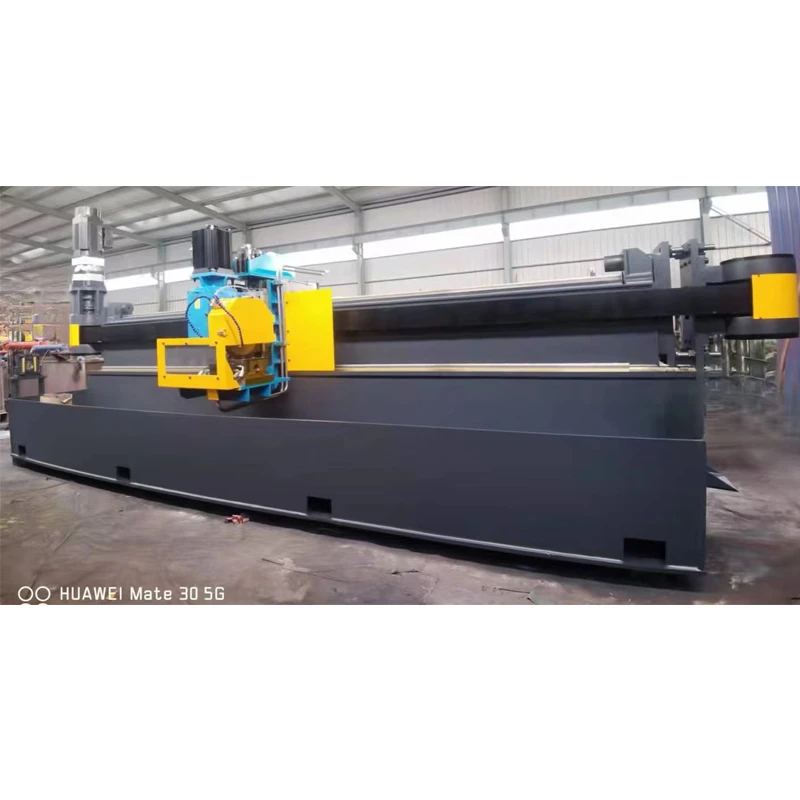CNC Mold Production Techniques for Precision Engineering and Design
CNC Mold Making Revolutionizing the Manufacturing Industry
In the dynamic world of manufacturing, CNC (Computer Numerical Control) mold making has emerged as a cornerstone technology that drives efficiency, precision, and innovation. The use of CNC technology in mold making has drastically transformed traditional processes, offering a myriad of advantages that cater to the increasingly sophisticated demands of various industries.
Understanding CNC Mold Making
CNC mold making refers to the process of creating molds and dies using CNC machines. These machines are equipped with computer software that enables them to perform intricate cutting, shaping, and machining operations with minimal human intervention. The automation of mold making through CNC technology allows manufacturers to produce complex shapes and designs with exceptional precision, which is a significant upgrade from manual machining methods.
Advantages of CNC Mold Making
1. Precision and Accuracy One of the most significant benefits of CNC mold making is its ability to achieve high precision and accuracy. CNC machines can operate within tolerances as tight as a few microns, ensuring that every mold produced meets the exact specifications required for the final product. This level of precision reduces the risk of errors and the need for rework, saving valuable time and resources.
2. Efficiency and Speed CNC machines can operate continuously, leading to faster production cycles. Once the design is input into the system, the CNC machine can replicate it repeatedly, producing molds at a much quicker rate than manual methods. This increased efficiency is crucial for manufacturers who need to meet tight deadlines and respond to market demands promptly.
cnc mold making

3. Flexibility in Design CNC mold making allows for greater flexibility in design. Manufacturers can easily modify digital designs to create different mold variations without the need for extensive retooling. This capability is especially valuable in industries such as automotive, aerospace, and consumer products, where customization is often required.
4. Reduced Waste CNC machining is known for its material efficiency. Traditional mold-making methods can generate a significant amount of waste, whereas CNC machining utilizes only the necessary material as determined by the digital design. This not only helps in reducing costs but also aligns with the growing emphasis on sustainability in manufacturing.
5. Integration with Industry 4.0 The advent of Industry 4.0 has introduced new levels of connectivity and automation in manufacturing. CNC mold making can easily integrate with IoT (Internet of Things) technologies, enabling real-time monitoring and data collection. This integration allows manufacturers to optimize their processes further, ensuring maximum productivity and minimal downtime.
Applications of CNC Mold Making
CNC mold making is used in a variety of industries, including automotive, electronics, healthcare, and consumer goods. In the automotive industry, for instance, precision molds are essential for producing components such as bumpers, dashboards, and various interior parts. Meanwhile, in the electronics sector, CNC molds are used to create casings and other critical components that require high precision.
Conclusion
CNC mold making represents a significant advancement in the manufacturing sector, offering numerous advantages over traditional methods. With its unparalleled precision, efficiency, and flexibility, CNC technology is set to continue revolutionizing the way molds are produced. As manufacturers increasingly adopt CNC mold making processes, they are poised to enhance their productivity while meeting the rigorous quality standards required in today's competitive market. The future of mold making is undoubtedly digital, and CNC technology will be at the forefront of this transformation.
-
High Frequency Straight Seam Welded Pipe Production Line-BzZhou Xinghua Machinery Equipment Manufacturing Co., LTD.|Precision Welding, High EfficiencyNewsJul.30,2025
-
High Frequency Straight Seam Welded Pipe Production Line|BzZhou Xinghua|Precision Welding&EfficiencyNewsJul.30,2025
-
High Frequency Straight Seam Welded Pipe Production Line - BzZhou Xinghua|Precision Engineering&EfficiencyNewsJul.30,2025
-
High-Frequency Straight Seam Welded Pipe Production Line-BzZhou Xinghua Machinery Equipment Manufacturing Co., LTD.NewsJul.30,2025
-
High-Frequency Straight Seam Welded Pipe Production Line-BzZhou Xinghua Machinery Equipment Manufacturing Co., LTD.|Precision Manufacturing, High EfficiencyNewsJul.30,2025
-
High Frequency Straight Seam Welded Pipe Production Line-BzZhou Xinghua Machinery Equipment Manufacturing Co., LTD.|Precision Steel Pipe Manufacturing&Industrial EfficiencyNewsJul.29,2025


